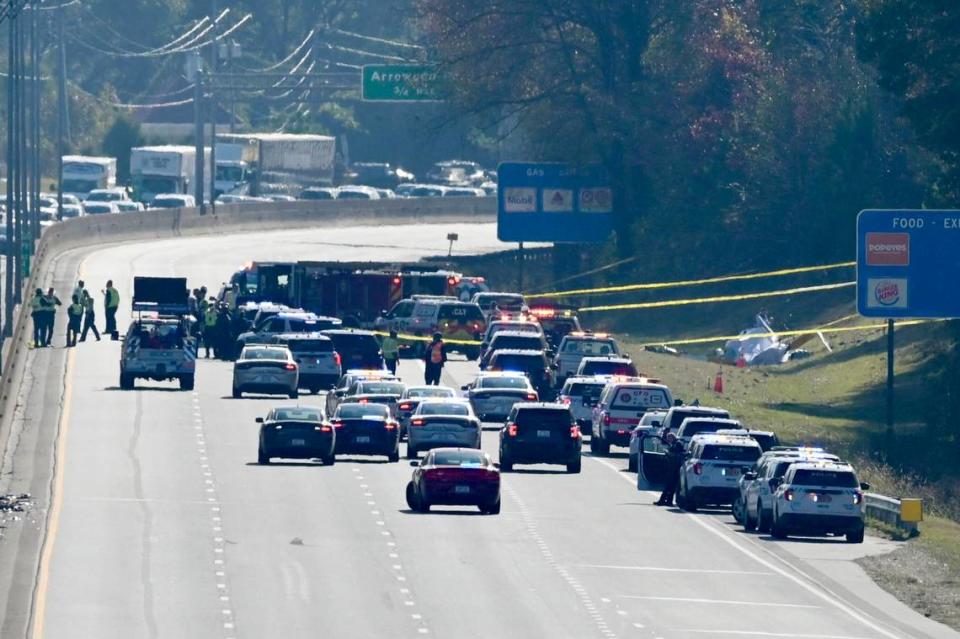Probable cause revealed in WBTV helicopter crash that killed pilot and meteorologist
Inadequate inspections led to the helicopter crash that killed WBTV meteorologist Jason Myers and Sky3 pilot Chip Tayag, the National Transportation Safety Board concluded in a report Thursday.
The crash happened just before noon on Nov. 22, 2022.
The helicopter spun out of control and crashed in grass along Interstate 77 south near Tyvola Road in Charlotte.
Report details the minutes before crash
The purpose of the flight was to provide video training for Myers over a simulated news scene, according to the NTSB.
“About 5 minutes into the flight, the pilot began a series of left, 360-degree orbits” over I-77, NTSB investigators said in the report. “During the third orbit, helicopter control was lost and the helicopter entered a steep descent.”

“The pilot made a radio call before impact stating that they were ‘going down,’” according to the NTSB report.
NTSB inquiry reveals loose parts
Parts that should have been connected on the main rotor may have been loose during multiple flights before the crash, NTSB investigators found.

“An examination of the helicopter’s flight controls after the accident revealed the forward left control rod end that should have been connected to the stationary swashplate on the main rotor was disconnected,” according to the report.
“And the connecting hardware was missing,” NTSB investigators said. “A metallurgical examination of the remaining components suggested that the connecting hardware, including a threaded bolt, nut, palnut, two washers and two hat-shaped spacers were loose and backed out during the flight.”
Further examination of the parts showed one of the spacers was installed backwards, according to the report. That most likely happened during an overhaul of the helicopter about three years before the crash, NTSB investigators said.
Parts involved in the crash were required to be inspected by the pilot during each pre-flight inspection and by maintenance workers at each 100-hour/annual inspection, according to the NTSB.
The NTSB found the probable cause of the crash to be the “inadequate inspections of the forward left control rod end attachment hardware to the stationary swashplate by the pilot and by maintenance personnel, resulting in an eventual loosening and backing out of the hardware and subsequent loss of helicopter control.”
Station management has not responded to media requests for comment about the NTSB report. WBTV included a link to the NTSB report in its article Thursday night about the findings.


